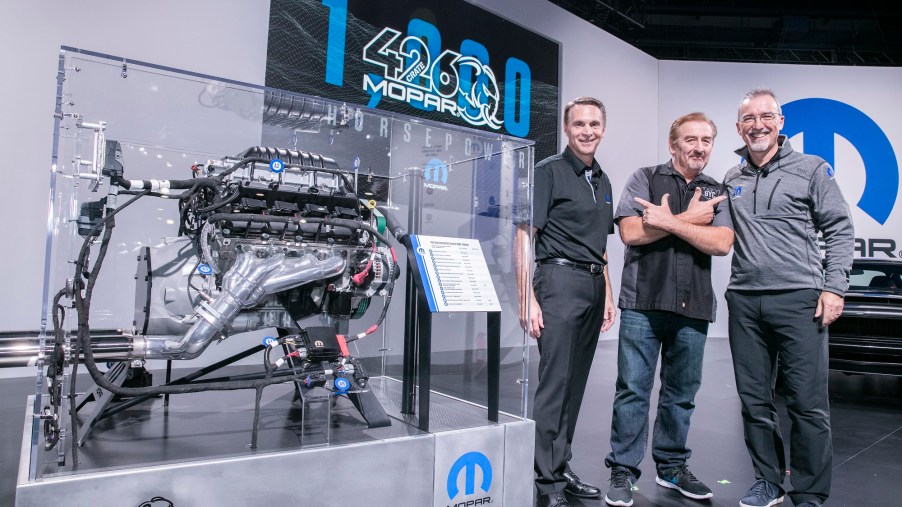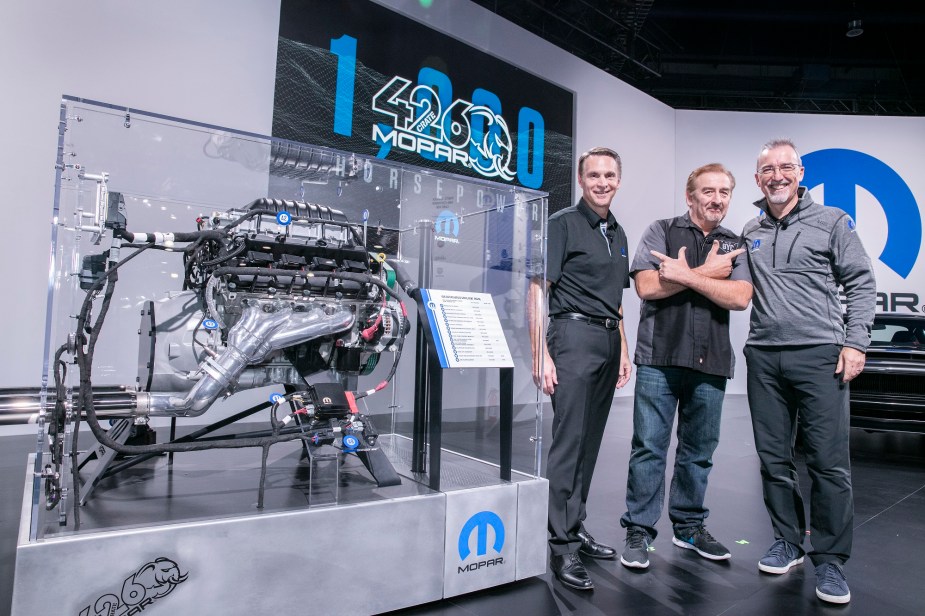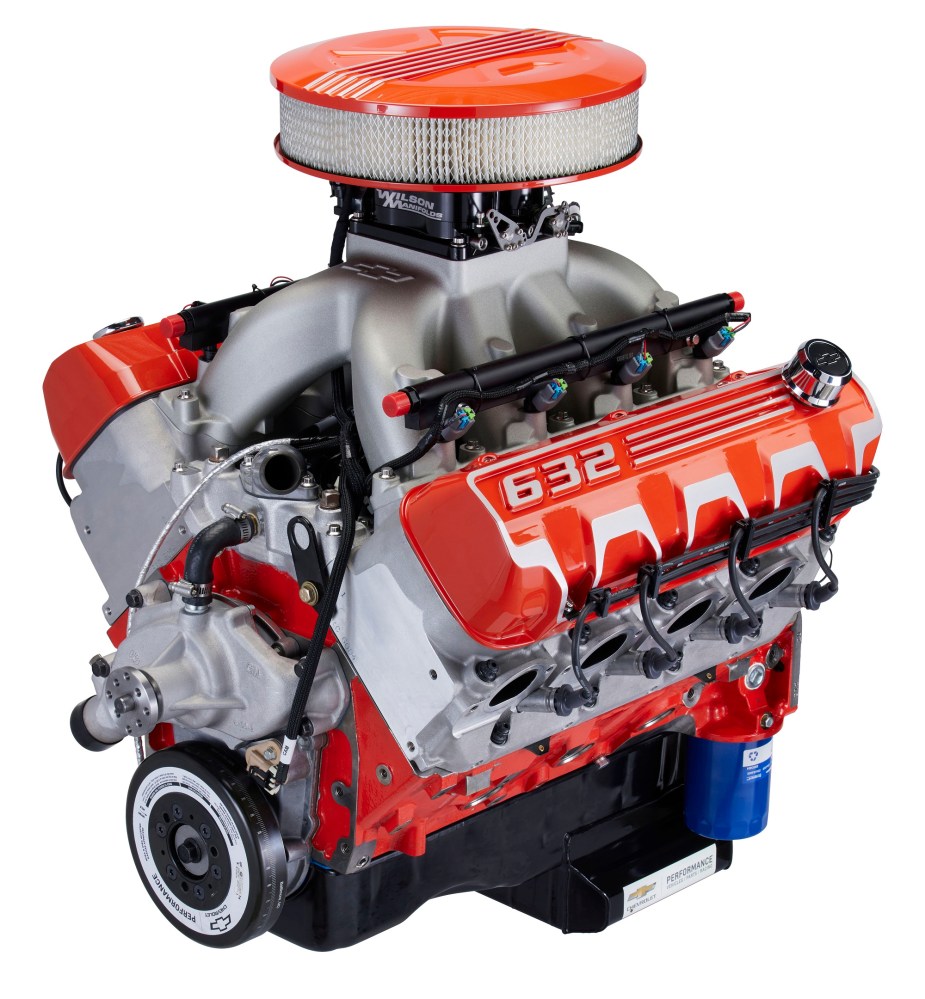
5 Ways To Outgun a Hellephant
The Hellephant takes Dodge’s beloved Hellcat moniker to the next level. However, unlike the Hellcat mill, you won’t find the Hellephant in any of Stellantis’ production cars, trucks, or SUVs. Instead, the Hellephant is a volcanic crate option for car builders to stuff into their tire-roasting street rods. However, the Hellephant isn’t your only 1,000 horsepower option; you could buy a different crate or build another engine like an LS, Hemi, Coyote, or 2JZ powerplant.
How powerful is the Hellephant?
The 426-cubic-inch Hellephant is a supercharged crate motor that promises 1,000 rampaging horses. That’s a tempting prospect and makes even the venerable 6.2L supercharged Hellcat mill look modest. In comparison, the Hellcat Redeye produces 797 angry ponies, more than 200 off from the mammoth crate motor. Still, while the massive V8 isn’t available in any mainstream production car, some examples of Hellephant builds have already hit the streets and drag strip.

For instance, Demonology packed the crate engine into a 2018 Dodge SRT Demon to test the capability of the 1,000-horsepower mill. The results were spectacular; the Hellephant-powered build covered the quarter mile in just 9.27 seconds, around 0.4 quicker than a prepped Demon. However, there are a few ways to outgun the Mopar crate engine, like building a twin-turbocharged 6.2L Hemi V8.
How much would it cost to build a 1,000-hp engine?
The most cost-effective way to hit the magic 1,000 horsepower mark is to build it or buy a car with a finished, race-ready heart. Depending on what kind of engine you want to build, your price tag could be anywhere from $8,000 to $30,000 to create your blacktop-bashing engine. According to MotorTrend, many of the builders they asked claimed that $20,000 is the lower end of what customers should expect to spend on a commission. Of course, it’s much cheaper to build an engine yourself or modify one than to buy a factory crate mill.
For instance, twin-turbo kits like the 5.0L Coyote-compatible Hellhorse Performance equipment can be rated for as much as 1,500 horsepower. Also, the LS engine is a popular option for street rod builders with their sights on the 1,000-horsepower benchmark, and they will happily accept twin turbochargers or superchargers. In addition to an LS, the 6.2L Hemi V8 or Toyota 2JZ engines are two other high-horsepower options. Both engines will support over 1,000 horsepower with the addition of forced induction, although replacing stock internals is an excellent way to avoid component failures.
How much is the new 1,000-horsepower Chevy crate motor?
In addition to building an LS, Hemi, 2JZ, or commissioning a custom build, there are other crate motors to make considerable power. For instance, the new Chevrolet ZZ632 produced 1,004 horsepower at 6,600 RPM when Chevrolet dyno-tested it. The monstrous 10.4L mill packs out-of-the-box electronic fuel injection (EFI), which allows it to make its power on 93 octane fuel. Of course, you’ll have to part with around $37,758 to snag your 1,000-horsepower Chevy engine with 1,000 horsepower right out of the box.

How much does the Hellephant cost?
The Hellephant is a costly alternative to building an LS mill to make big power. Specifically, the Dodge crate costs about $33,343. While that’s a big ask, it’s cheaper than the big block from the Chevrolet side of the house. Of course, building or modifying your own application is almost certainly the cheapest option.
What do you think is the best way to hit 1,000 horsepower? Leave us a comment below!



